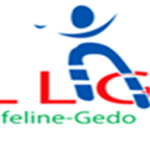Job Description
POSITION: SRCS FIRST AID AMBULANCE RESPONDER
Job Grade:
Band 3
Department:
First Aid Program
Location
Mogadishu Branch
Reports To:
SRCS FAPHEC Focal Point, Branch Coordinator
Direct Reports:
Team leader
Profession:
Nurse FA & Pre-hospital Care
Liaising with:
Health Department
Background
The Somali Red Crescent Society (SRCS) is an independent, non-political humanitarian organization founded in April 1963 and was established with presidential decree No. 187 in 1965. The ICRC then recognized it in 1969 and became a member of the International Federation of the Red Cross and Red Crescent Societies in the same year.
Main tasks
The main task of an ambulance responder is to provide emergency medical care and transportation to individuals who are injured, critically ill, or facing a medical emergency. These responders are often the first healthcare professionals to arrive at the scene of an accident, medical incident, or disaster.
In case of big incidents, the Ambulance Responder is responsible for assessing security and safety at the scene of incidents and keeping alert and conscious for any other further dangers; producing a METHANE report. Performing prioritisation to the mass casualties incidents and making triage area in order to sort out patients.
At all times, the Ambulance Responder on shift should be prepared and ready with his PPE and response kits/materials that should use. He should always make the best possible effort to hygienic practices.
As representative of the SRCS the Ambulance Responder should be complying with the Code of Conduct, be smart in appearance and courteous at all times to convey a high level of confidence to the public.
Responsibilities
The key responsibilities of an ambulance responder include:
1. Emergency Medical Care: Assessing the patient’s condition and providing immediate medical attention and treatment. This may involve administering first aid, managing trauma injuries, providing life support measures, or addressing various medical emergencies such as cardiac arrest, respiratory distress, seizures, etc.
2. Transportation: Safely transporting patients to a medical facility where they can receive further evaluation and treatment. This involves carefully transferring the patient from the scene to the ambulance and then from the ambulance to the hospital or other appropriate healthcare facility.
3. Communication: Maintaining communication with the dispatch center and healthcare facilities to relay critical information about the patient’s condition, ensuring that the receiving facility is prepared to receive the patient and provide the necessary care.
4. Medical Equipment Management: Ensuring that all medical equipment in the ambulance is properly maintained and ready for use. This includes monitoring and restocking medical supplies regularly.
5. Documentation: Recording accurate and detailed information about the patient’s condition, the medical care provided, and any other pertinent information related to the incident. Proper documentation is essential for maintaining a comprehensive patient record and for legal and administrative purposes.
6. Emergency Driving: Safely operating the ambulance while adhering to traffic rules and regulations to reach the destination quickly and efficiently.
7. Collaboration: Collaborating with other emergency responders, such as firefighters and law enforcement personnel, in cases of accidents or emergencies that require multi-disciplinary responses.
8. Continuous Education: Keeping up with the latest medical advancements and attending regular training sessions to maintain and improve their knowledge and skills.
Patient Care :
Assess patients’ health conditions, including taking vital signs, medical history, and conducting physical examinations.
Administer medications and treatments if needed.
Monitor and document patients’ progress, symptoms, and changes in condition.
Provide emotional support and comfort to patients and their families.
10. Emergency Response :
Respond to emergencies and provide immediate medical care as needed.
Stay calm under pressure and effectively handle critical situations.
Skills and Qualifications
– Qualification:
o Valid Bachelor of nursing (RN), Medicine license or certification in the respective jurisdiction or
o Bachelor of Public Health / Diploma of Nursing, Midwifery with demonstrated experience in prehospital care or hospital emergency unit
o Shortlisted applicants will be asked to sit a 60-minute test, with the pass mark set at 50%.
– Assets:
o Recent completion of SRCS’ Basic First Aid Course an asset
o Knowledge of English an asset
o Experience in prehospital emergency care an asset
o Strong knowledge of medical terminology, procedures, and protocols.
o Excellent communication and interpersonal skills.
o Ability to work in a fast-paced and dynamic healthcare environment.,
o Compassionate and empathetic attitude towards patients and their families.
o Strong problem-solving and critical-thinking skills.
How to apply
Interested candidates should email their updated CV, cover letter, in one PDF, to hr.srcs@yahoo.com
Note: applications which do not meet the above requirements will not be considered.
Only Shortlisted Candidates will be contacted. Please write the position you are applying on the subject line. If you don’t write it, you applications will not consider.
Text Box: Job disclaimer and notification:
Somali Red Crescent Society (SRCS) is an equal opportunity employer and does not charge / accept any amount or security deposit from job seekers during the selection process or while inviting candidates for an interview.
Posted date:29 June 2024 Deadline for Applications: 5th July, 2024






